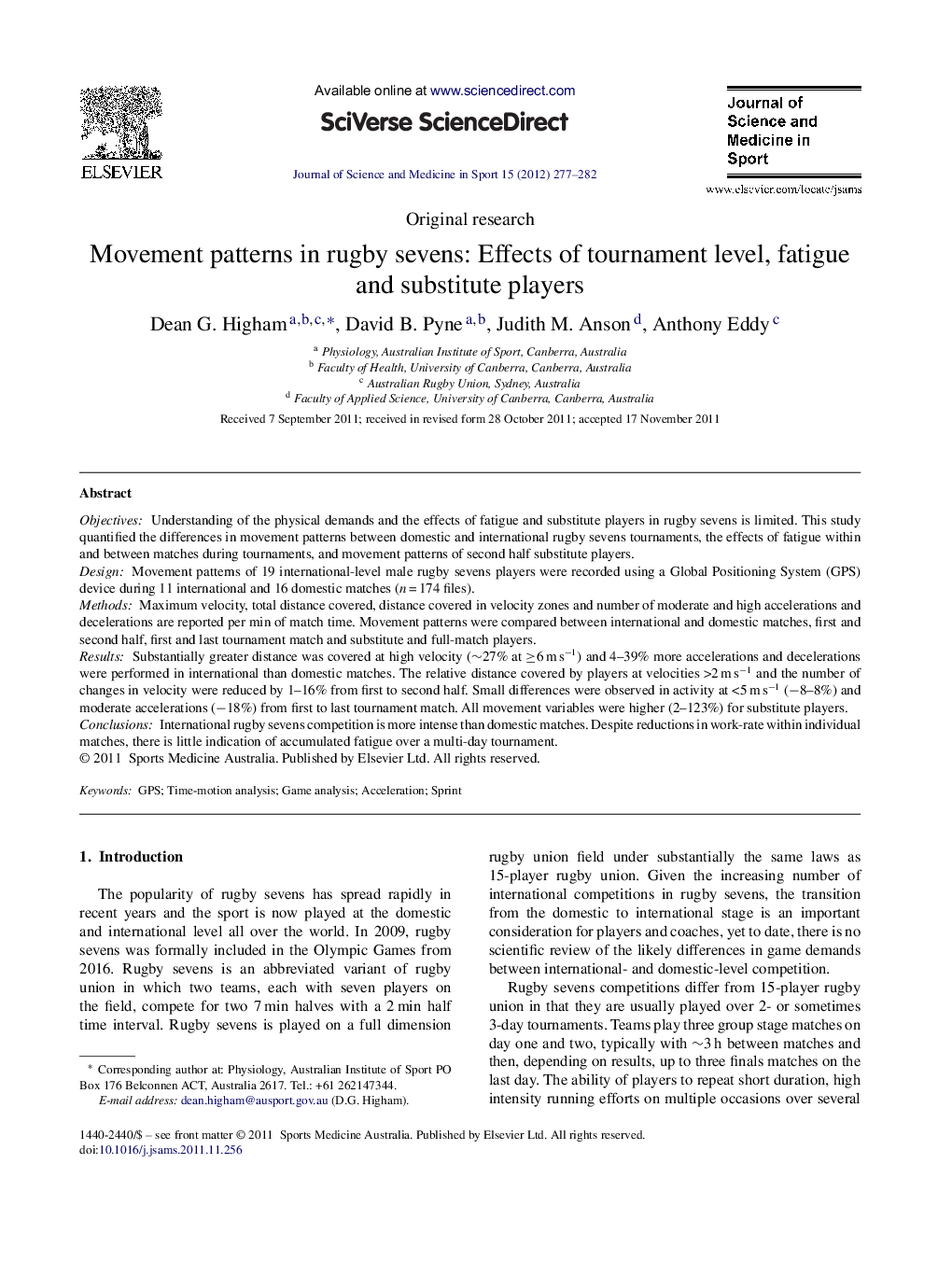| کد مقاله | کد نشریه | سال انتشار | مقاله انگلیسی | نسخه تمام متن |
|---|---|---|---|---|
| 2708081 | 1144885 | 2012 | 6 صفحه PDF | دانلود رایگان |

ObjectivesUnderstanding of the physical demands and the effects of fatigue and substitute players in rugby sevens is limited. This study quantified the differences in movement patterns between domestic and international rugby sevens tournaments, the effects of fatigue within and between matches during tournaments, and movement patterns of second half substitute players.DesignMovement patterns of 19 international-level male rugby sevens players were recorded using a Global Positioning System (GPS) device during 11 international and 16 domestic matches (n = 174 files).MethodsMaximum velocity, total distance covered, distance covered in velocity zones and number of moderate and high accelerations and decelerations are reported per min of match time. Movement patterns were compared between international and domestic matches, first and second half, first and last tournament match and substitute and full-match players.ResultsSubstantially greater distance was covered at high velocity (∼27% at ≥6 m s−1) and 4–39% more accelerations and decelerations were performed in international than domestic matches. The relative distance covered by players at velocities >2 m s−1 and the number of changes in velocity were reduced by 1–16% from first to second half. Small differences were observed in activity at <5 m s−1 (−8–8%) and moderate accelerations (−18%) from first to last tournament match. All movement variables were higher (2–123%) for substitute players.ConclusionsInternational rugby sevens competition is more intense than domestic matches. Despite reductions in work-rate within individual matches, there is little indication of accumulated fatigue over a multi-day tournament.
Journal: Journal of Science and Medicine in Sport - Volume 15, Issue 3, May 2012, Pages 277–282